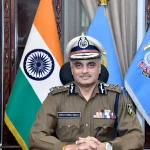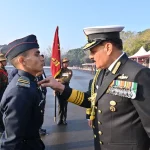The role of a Subedar Major, commonly referred to as SM Sahab, is pivotal in the structure and functioning of the Indian Army. This position carries significant weight in terms of leadership, responsibility, and the management of both personnel and operations. As the senior-most Junior Commissioned Officer (JCO), the Subedar Major acts as the backbone of a unit, often providing the necessary support and guidance to ensure optimal functioning and morale among soldiers. Their influence spreads across multiple dimensions—disciplinary, administrative, and ceremonial—making them indispensable in the daily life of military operations.
Historical Context
To fully appreciate the importance of a Subedar Major, it’s essential to consider the historical evolution of the JCO rank within the Indian Army. The position of JCOs, especially that of the Subedar Major, can be traced back to the colonial era when the British Indian Army recognized the need for non-commissioned officers to bridge the gap between higher-ranking officers and enlisted personnel. Historically, JCOs have played substantive roles in leadership, often acting as custodians of regimental traditions and morale.
The Subedar Major rank has evolved with the changing structure of the army, adapting to modern needs while retaining its foundational role as a leader and counselor. Today’s Subedar Majors not only preserve historical practices but also integrate contemporary strategies in communication and efficiency, reflecting the dynamic nature of military leadership.
Powers and Duties of Subedar Major
The responsibilities of the Subedar Major encompass numerous critical functions, reflecting their extensive authority and trust placed by both the commanding officers and the soldiers. Below we delve deeper into these powers and duties.
Senior Advisor to the Commanding Officer
One of the primary roles of a Subedar Major is to serve as a senior advisor to the Commanding Officer (CO). This advisory capacity covers an array of essential matters such as troop welfare, discipline, unit morale, and overall functioning. The insights and extensive experience that SM Sahab brings to this role make them a reliable confidant for the CO, aiding in informed decision-making that directly impacts the effectiveness of the unit.
Discipline and Conduct
Discipline is a cornerstone of military effectiveness, and the Subedar Major bears the significant responsibility of upholding it. They ensure adherence to military standards, address minor infractions, and enforce consequences for misconduct as necessary. By leading through example, they serve as role models, demonstrating the importance of integrity and discipline to junior ranks.
Administrative Duties
Subedar Majors also play a vital role in managing administrative responsibilities within their units. This includes maintaining personnel records, overseeing leave applications, and ensuring that all documentation complies with military regulations. SM Sahab also assists the CO and adjutant in implementing directives from higher command, streamlining operational processes.
Training Oversight
Another critical duty involves the planning and oversight of training activities. The Subedar Major ensures that all ranks, including soldiers, JCOs, and Non-Commissioned Officers (NCOs), receive adequate training to fulfill their operational duties. This oversight not only enhances combat readiness but fosters an environment where continuous learning and improvement are prioritized.
Communication Bridge
The Subedar Major acts as an essential communication bridge within the military structure. They facilitate clear communication between officers and enlisted personnel, ensuring that orders and concerns are relayed effectively. This role is crucial for fostering a healthy command climate, repurposing soldiers’ grievances to higher echelons while simultaneously ensuring that orders from superiors are comprehensively understood and executed.
Ceremonial and Protocol Leadership
In addition to their operational responsibilities, Subedar Majors are instrumental in organizing and overseeing ceremonial events such as parades and guards of honour. They ensure these events adhere to military traditions, which not only reinforces camaraderie but serves as an expression of respect for the institution and its traditions.
Welfare Advocacy
An essential aspect of the Subedar Major’s responsibilities includes advocating for the welfare of soldiers and their families. By handling grievances and administering welfare schemes, they contribute significantly to maintaining a healthy and supportive environment within the unit. Their efforts to understand and address the needs of soldiers help bolster morale, thereby enhancing productivity and cooperation.
Custodian of Tradition
The Subedar Major plays a significant role in upholding the unit’s traditions, customs, and ethos. This involves teaching younger soldiers about the unit’s history and ensuring that the values and lessons of yesteryear are passed down to future generations, thus preserving a rich military heritage.
Unit Security and Command
While the Subedar Major primarily serves in a support role, they also bear responsibility for the security of all personnel within the unit. In the absence of higher officers, an SM Sahab may assume temporary command and make tactical decisions, ensuring that operational readiness and unit cohesion are maintained.
Financial Responsibility
In many roles, the Subedar Major serves as the unit or regiment cashier, managing all financial transactions. This responsibility requires a firm grasp of military budgets and fiscal discipline, underscoring their role in maintaining operational efficacy.
Mentorship
Lastly, mentorship is a vital aspect of the Subedar Major’s duties. By fostering leadership qualities and professionalism among junior officers and soldiers, they significantly enhance the developmental trajectory of younger military personnel. Their guidance shapes the future leaders of the Indian Army, ensuring a stable and capable military hierarchy.
Statistical Data and Research Insights
Understanding the full impact of the Subedar Major role requires examining the broader context of the Indian Army’s structure and operational mandates. As of 2022, the Indian Army consisted of over 1.4 million active personnel, with a vast network of JCOs and NCOs constituting a significant part of ground-level operational capacity. Subedar Majors, being the senior-most JCOs, are fundamentally positioned to influence morale and effectiveness across these ranks.
Comparative Analysis
While the role of the Subedar Major is unique to the Indian Army, a comparative perspective can also be valuable. Other Commonwealth nations have similar ranks within their military hierarchies, such as the “Warrant Officer” in the British Army. Like the Subedar Major, Warrant Officers serve as vital links between the officers and men and have extensive responsibilities related to discipline and training.
What distinguishes the Subedar Major is their proactive involvement in ceremonial functions and their custodianship of regimental traditions. This focal point on tradition and heritage underscores the unique needs and cultural aspects of military service in India.
Challenges and Solutions
Despite their significant authority, Subedar Majors face numerous challenges, including maintaining discipline amidst evolving social conditions, addressing modern welfare needs, and adapting training programs to technological advancements.
One pressing challenge is the high expectation of maintaining morale amidst fluctuating conditions, whether socioeconomic or operational. To tackle this challenge, a robust welfare framework should be implemented, ensuring the physical and psychological well-being of soldiers and their families. Providing access to mental health resources and enhancing communication avenues for soldiers can contribute positively to morale.
Future Trends and Predictions
As the Indian Army continues to modernize, the role of the Subedar Major is likely to evolve in response to changing operational demands and advances in technology. Trends suggest an increased reliance on technology-powered training solutions, which may necessitate the Subedar Major to adapt their oversight methods.
Moreover, as the Indian Army integrates more women into various roles, Subedar Majors will play a critical role in fostering an inclusive environment and managing a diverse workforce, ultimately contributing to a more cohesive and effective unit.
Conclusion
In conclusion, the Subedar Major, or SM Sahab, embodies a multifaceted role that is integral to the operational and ceremonial fabric of the Indian Army. Their responsibilities span leadership, discipline enforcement, administrative support, and cultural preservation, making them an indispensable component of military life. The historical significance of the position, combined with evolving challenges and future innovations, ensures that the role of the Subedar Major remains relevant and crucial to the Indian Army’s mission. For those looking to understand the complexities of military leadership, the Subedar Major offers an unparalleled insight into the harmonization of tradition, education, and operational excellence.
For aspiring military personnel or those keen to understand Army dynamics better, resources available through platforms like SSBCrack and SSBCrackExams can provide invaluable insights. Engaging with such materials further amplifies the understanding of military roles, traditions, and the importance of service within India’s defence framework.












